Triple whammy: JB Ramadan bazaar vendors grapple with higher costs, stricter rules and price-conscious customers
JOHOR BAHRU: Romayana Rosli has been running her “ikan bakar” - or grilled fish - stall at the Ramadan bazaar outside Angsana Mall for close to a decade.
Known for attracting large crowds, this bazaar in Johor Bahru is a hotspot for locals and visitors from Singapore alike. It is a 16-minute drive from the Bangunan Sultan Iskandar (BSI) customs, immigration and quarantine complex at the Johor-Singapore Causeway.
But the 35-year-old Romayana says that she is committed to ensuring that her food remains affordable for everyone, regardless of where they come from.
“I know that there are people who want to try our food but cannot afford it, so I make sure to offer affordable options. For example, I sell ikan cencaru bakar (grilled torpedo scad fish) for just RM10 (US$2.25) so everyone can enjoy it,” she said.
Since Romayana first started at the annual Ramadan bazaar in 2016, the rent for her stall outside the popular Johor Bahru mall has risen by over 70 per cent. This year, it costs her around RM4,300 to operate there, up from the RM2,500 she paid back then.
Ramadan bazaars, a familiar sight throughout Malaysia during the fasting month, offer a wide variety of food and drinks. They typically offer dishes that are to be consumed for the breaking fast meal and generally close at 7pm or 8pm in the evening.
For many traders, setting up shop at these bazaars is a means of earning extra income before the festive season.
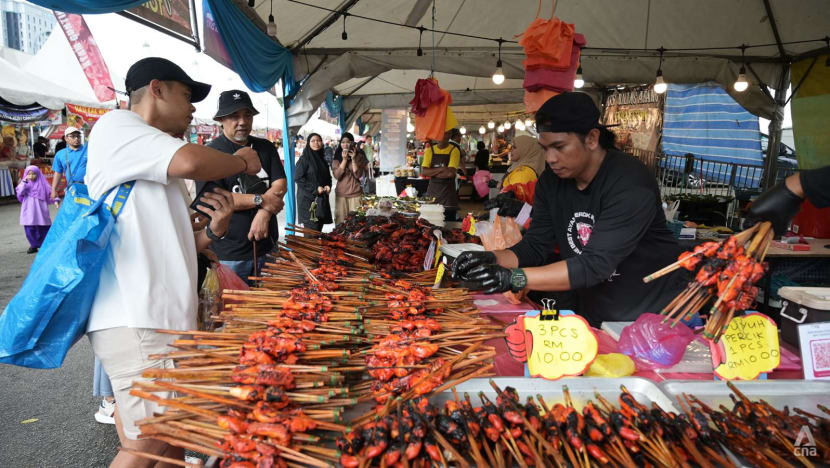
But this year, these business owners say that they expect a dip in profits as they face a triple whammy of higher operational costs, increased scrutiny from the authorities in a bid to address alleged price gouging issues, as well as a more price-conscious customer base.
These vendors also said that there have been increased difficulties in sourcing necessities such as cooking oil, while others note that they had had to increase the prices for their food in order to cope with rising costs.
STEPPED UP ENFORCEMENT CHECKS
At least one stall owner whom CNA spoke to who has offerings at several Ramadan bazaar sites in Johor Bahru said that local authorities have stepped up measures to address complaints of rising prices by customers.
“The enforcement officers will conduct spot checks twice a week,” 35-year-old Mohammad Habil Jaffri - who runs the Pau Premium Abang Manis stalls at bazaars in Taman Suria and B5 Johor Street Market - told CNA.
Johor Housing and Local Government Committee chairman Jafni Md Shukor had announced that action would be taken against Ramadan bazaar license holders who transfer their permits to third parties.
This is part of a nationwide effort “to prevent middlemen from reaping excessive profits at the expense of traders”, local media reported.
Similarly, Prime Minister Anwar Ibrahim had also warned that bazaar licenses across Malaysia, should only be held by genuine traders. The licences, he said, must be revoked if transferred.

Jafni, who visited one of the Ramadan bazaars at Bandar Baru Uda on Mar 9, said that the frequent inspections are conducted to ensure compliance.
Last year, the Taman Suria Ramadan bazaar in Johor went viral after a TikTok video claimed that a roti john - a type of omelette sandwich made with a French loaf and meat-and-egg filling - was being sold for RM40 while burgers were allegedly priced at RM30 each, sparking widespread outrage.
In response, Johor authorities swiftly denied any instances of price gouging back then and dispatched eight ministry enforcement officers to conduct spot checks.
Earlier this month, several video clips had reportedly gone viral on social media showing Kuala Lumpur City Hall (DBKL) enforcement officers confiscating items sold by Ramadan bazaar traders at Taman Wilayah Selayang and Masjid Jamek for allegedly conducting business in unauthorised areas, obstructing pedestrian walkways and operating without a licence.
Minister in the Prime Minister’s Department (Federal Territories) Zaliha Mustafa also warned that traders must not take advantage of the system by trading illegally at bazaars in Kuala Lumpur.
Meanwhile, local news agency Bernama reported that DBKL introduced a “reasonable” rental rate of RM500 for Ramadan bazaars at 42 locations in the capital city to help traders and curb potential price gouging.
“This allows traders to sell at competitive prices, although other factors such as the cost of raw materials and profit margins are still the main determinants of the selling price,” Zaliha told reporters, as quoted by Free Malaysia Today earlier this month.
CONSUMERS, VENDORS IN SINGAPORE FEELING THE PINCH AS WELL
The trend of traders grappling with price-sensitive consumers and “exorbitant” operational costs is also evident across the causeway at Ramadan bazaars in Singapore.
Last year’s Goods and Services Tax hike to 9 per cent, alongside soaring rental rates and base prices, has left many vendors with no choice but to raise their prices, much to the frustration of consumers.
Many of these customers and stall owners however, are still finding ways to embrace the yearly tradition meaningfully.
Like those in Johor Bahru, several customers at the annual Geylang Serai and Kampong Gelam bazaars told CNA they are adjusting their spending in response to higher prices.
“I will still come to the bazaar, but I will think twice before making a purchase,” Ani, who visited the Kampong Gelam bazaar, said.
“It is very expensive for basic things, some meals can cost around S$20 (US$15) and the portions are not even that big,” concurred 17-year-old Naira, who spoke to CNA at the Geylang Serai bazaar.
“But I also get it because rent prices are very high.”
.jpg)
Burhan Jumadi - campaign manager for Gemilang Kampong Gelam 2025 - told CNA that rental for booths at the bazaar centering the iconic Sultan Mosque has been capped at S$14,500 for food and beverage (F&B) vendors, and S$3,800 for retail vendors this year.
These amounts, however, do not include the utility costs which vendors also bear.
Asyraf Rasheed, owner of Smashed at the Kampong Gelam bazaar, told CNA that he spent close to S$17,500 in total for rent and utilities, about a 10 per cent increase from last year.
Muzaffar, owner of Mandi House at Kampong Gelam’s bazaar, similarly shared that his total rent and utility costs have surged to about S$16,000, marking a more than 70 per cent increase from the S$9,000 in 2023.
At the Geylang Serai bazaar, a stallholder who has been operating there since 2016 said that rent is undoubtedly "going upwards" each year.
Muhammad Hasif Othman, the founder of Katoshka - which sells russet fries with sauces - highlighted that total rent this year has reached over S$20,950, inclusive of electricity bills.
“The barrier to entry is getting higher, making it difficult for small businesses to sustain themselves and for new entrepreneurs to break into the scene,” Hasif told CNA.
But despite the high costs, organisers said that demand for a space at the bazaars has been high.
All available stalls at the Kampong Gelam Bazaar were taken up this year - just as it had been in 2024 - its organiser told CNA.
In Geylang, 90 per cent of stallholders from 2024 also returned this year, said the organiser in response to CNA’s query.
“For some of us, this is our livelihood, we have to make it work,” Asyraf - the owner of Smashed - told CNA.
The stall, which sold burgers last year, now serves tacos, acknowledging that customers are becoming “more selective” when shopping at bazaars.
“People may be more mindful of their spending, but they still find ways to embrace this yearly tradition,” Hasif shared.
Despite the increasing costs, the Katoshka founder highlighted that returning to Geylang Bazaar is about more than just business.
“It’s a tradition, and it holds deep cultural and historical significance,” said Hasif.
“We do what we can to keep it alive, knowing it’s a place that brings the community together.”
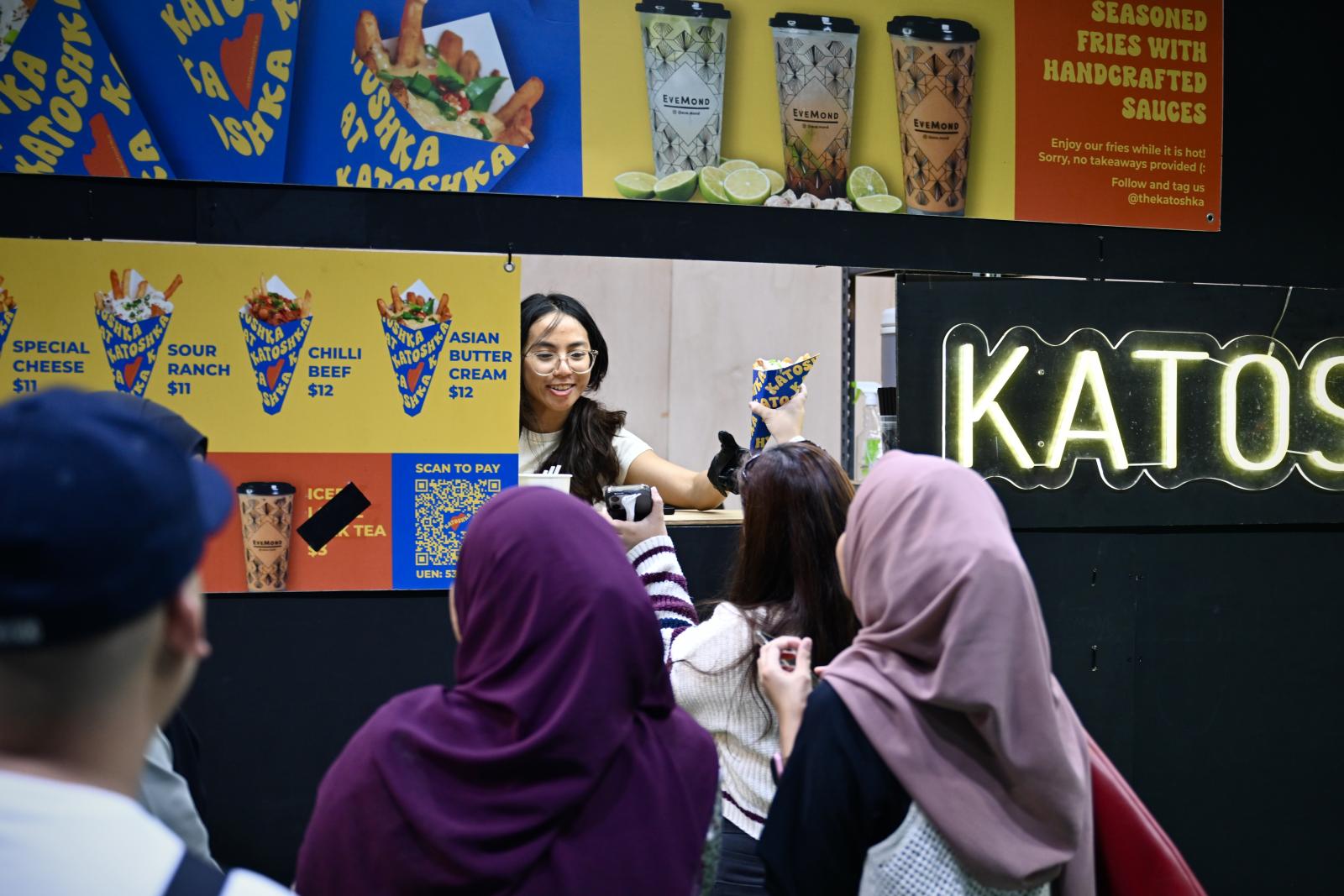
HIGH OPERATIONAL COSTS IN JOHOR BAHRU
In Johor Bahru, however, rental prices for bazaars with high footfall, like the one outside Angsana Mall, can reach about RM4,300 a month.
Other popular locations, such as the Taman Suria Ramadan bazaar - situated in an open lot just outside the Giant Southern City supermarket and close to shopping centres like KSL City Mall and Mid Valley Southkey - also face similar challenges of having high rental prices.
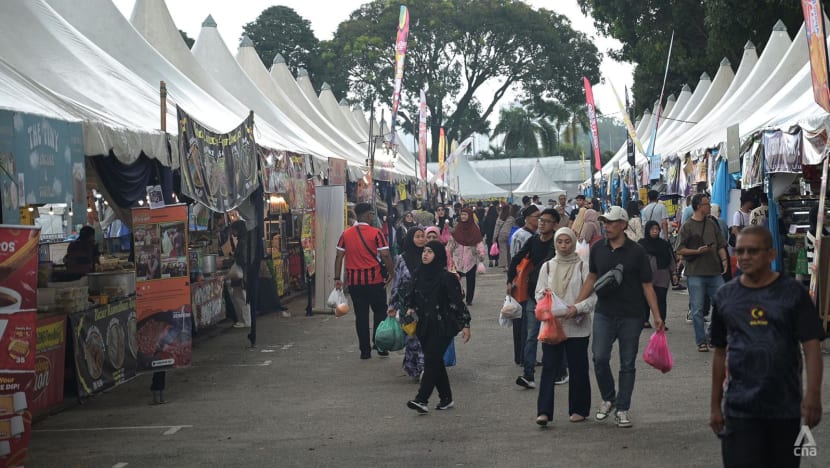
Less busy spots in Johor Bahru have rents as low as about RM600, according to an organiser for one of the Ramadan bazaars at Bandar Baru Uda.
In addition to rising rent, traders are grappling with inflation, which has driven up the prices of essential ingredients.
“The price of chicken has gone up by RM2 from last year, while coconut milk is about RM4 more expensive,” Norafitta, who sells nasi lemak at Angsana’s bazaar, told CNA.
Norafitta, who has been running the stall for four years with her daughter Ai’risyah Nazira Mohd Amsyari, shared that while profits are still possible, they are not as high as before.
These traders are also facing a cooking oil shortage in Johor Bahru, forcing them to opt for more expensive alternatives, further increasing their operational costs.
Nonetheless, Norafitta, like her fellow vendor Romayana, has kept her nasi lemak price at RM8 per packet to maintain affordability.
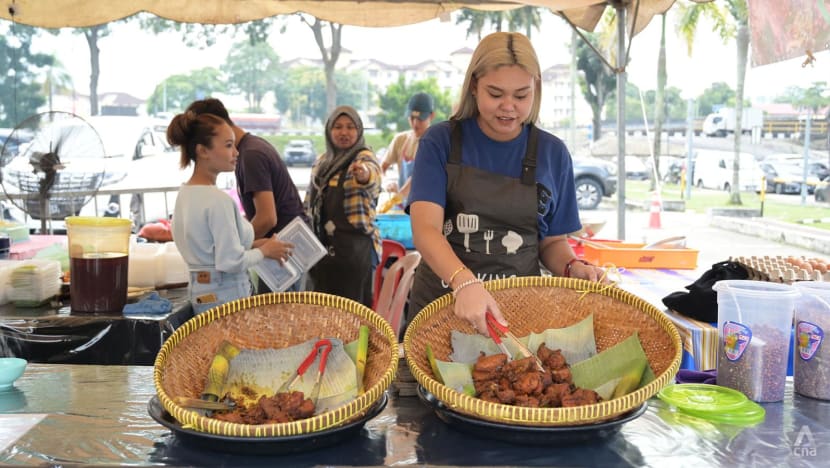
“My profits are not as high as they were four years ago, although I’ve kept the price of my (standard) nasi lemak the same. To offset the rising costs, I’ve only increased the price of other (side) items, like my sambal sotong (squid),” she said.
Similarly, other vendors - such as the owner of AlFairuz Nasi Arab which sells Mediterranean mandi rice at Angsana’s bazaar - have had to increase prices to absorb the rising costs.
“We increased the price of our nasi mandi by RM2, from RM38 to RM40,” its owner, who declined to be named, told CNA.
Meanwhile, 33-year-old Zulaiha Malik - a trader selling “air balang” or fruity iced beverages - said that her business capital increased by RM10,000 this year due to the rising costs.
“Last year, our capital was about RM30,000 but this year, it’s RM40,000,” she said, referring to the amount of money she had spent this year to purchase the drinks and ingredients needed to make the fruity concoction she sells.
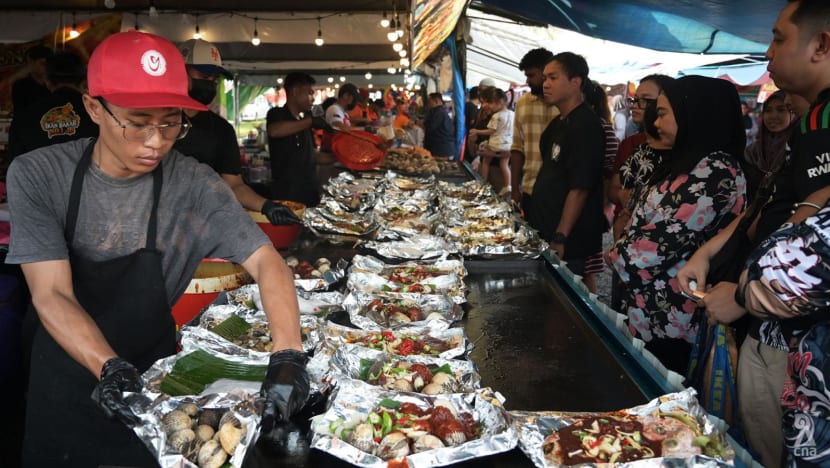
BAZAAR CUSTOMERS “STILL SPEND BUT ARE MORE PRUDENT NOW”
These traders are not the only ones feeling the pressure of inflation, as consumers are also becoming more price-conscious.
“They still spend but are a bit more prudent now, buying only what they need,” Hasnawi Ahmad, spokesman for the Medan Selera Mahsuri Traders’ Association, told CNA.
The association is the official organiser for one of the bazaars at Bandar Baru Uda.
“Customers used to buy everything - kueh, drinks, ayam percik (grilled chicken) - but now, they are more selective,” added Hasnawi.
Despite Ramadan bazaars’ reputation for offering affordable food, consumers are noticing price hikes on popular items.
“Roti john used to be about RM5 to RM7 but now, it is about RM10,” Muhammad Aizat shared with CNA.
The 30-year-old insurance manager also admitted that he is more mindful of his spending this year due to inflation.

“I will still go to the bazaar. Last time, I probably went to the bazaar for all 30 days, but now I will cut it to maybe 20 days,” he said, adding that he will also opt for home-cooked meals instead of food items at the bazaar.
Similarly, customer Aziq - a regular at local bazaars in Johor Bahru - told CNA that the price of Mediterranean rice had increased from RM18 to RM20.
“I now plan what I would like to purchase first, if I want the nasi arab (Mediterranean rice), I will just buy that and nothing else,” he said.
Ayu, a customer from Negeri Sembilan who is spending her first Ramadan in Johor, noted that food prices here are significantly higher than in her hometown.
“Murtabak in Negeri Sembilan costs about RM5 to RM6, but here it’s about RM10,” she said.
Despite the rising costs and challenges, Hasnawi - the spokesman from a local traders’ association - stressed that traders are generally driven by “passion” and “the spirit of giving” during Ramadan.
“It’s not just about profit; the passionate traders are dedicated to offering a wide variety of food to the local community,” he said.
免责声明:投资有风险,本文并非投资建议,以上内容不应被视为任何金融产品的购买或出售要约、建议或邀请,作者或其他用户的任何相关讨论、评论或帖子也不应被视为此类内容。本文仅供一般参考,不考虑您的个人投资目标、财务状况或需求。TTM对信息的准确性和完整性不承担任何责任或保证,投资者应自行研究并在投资前寻求专业建议。
热议股票
- 1
- 2
- 3
- 4
- 5
- 6
- 7
- 8
- 9
- 10